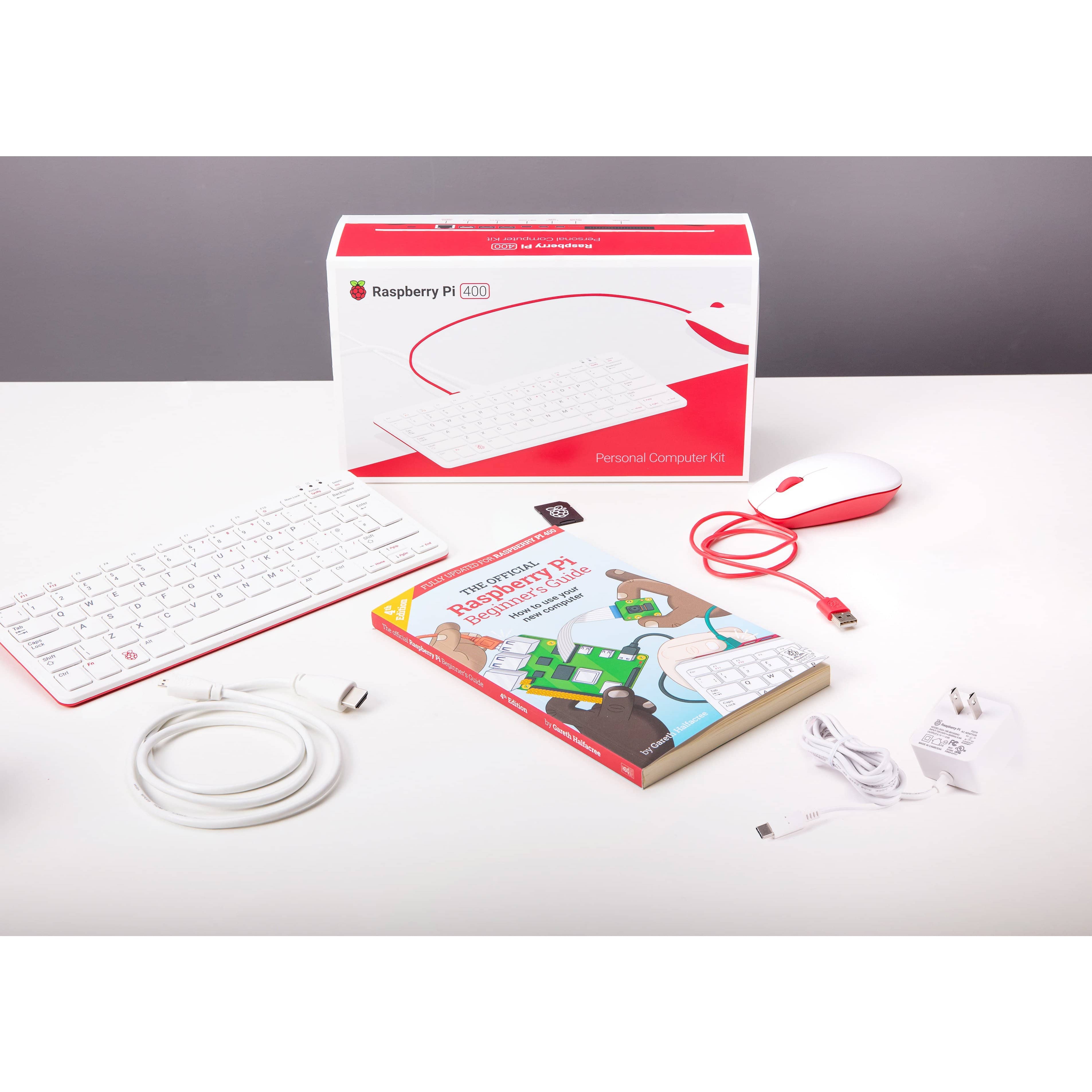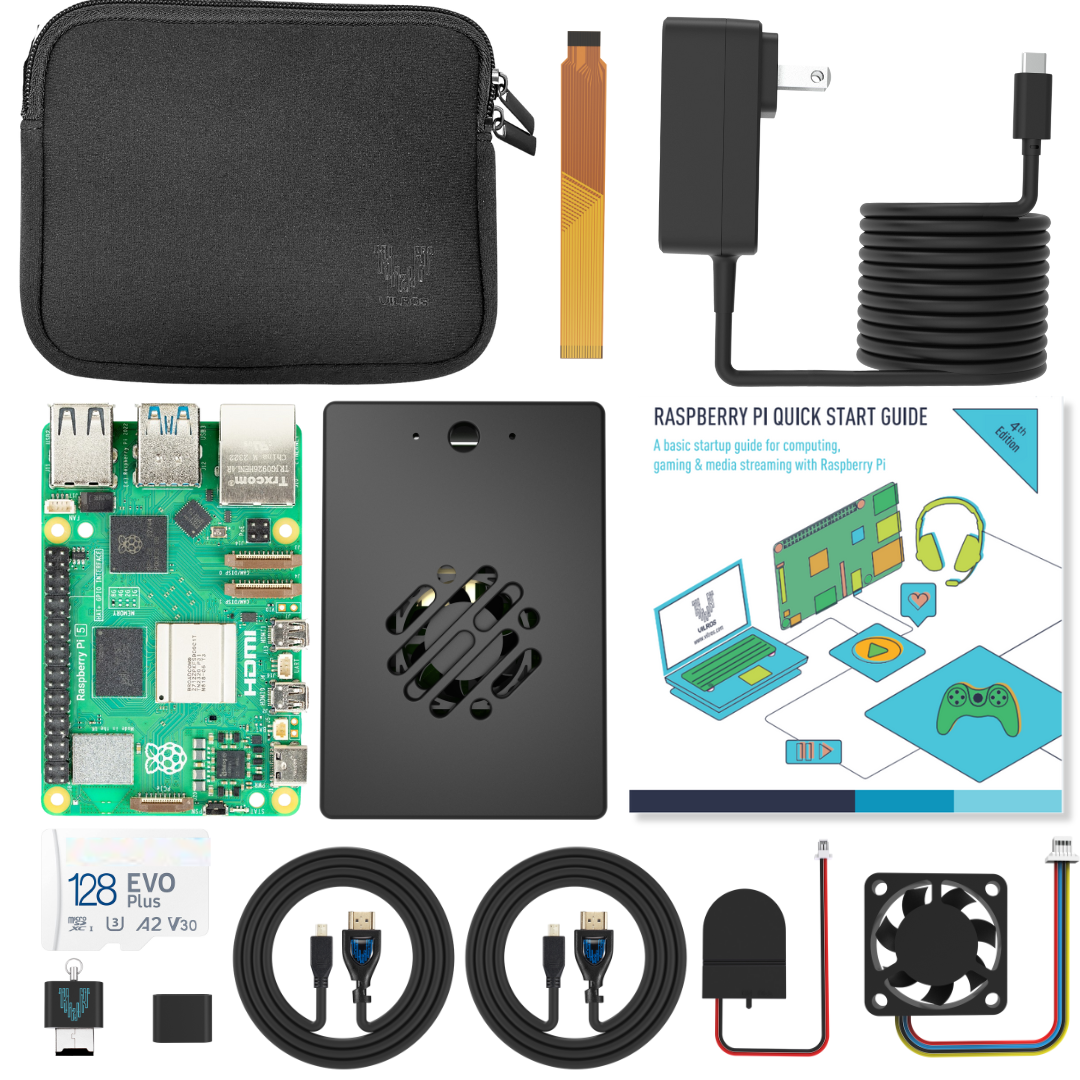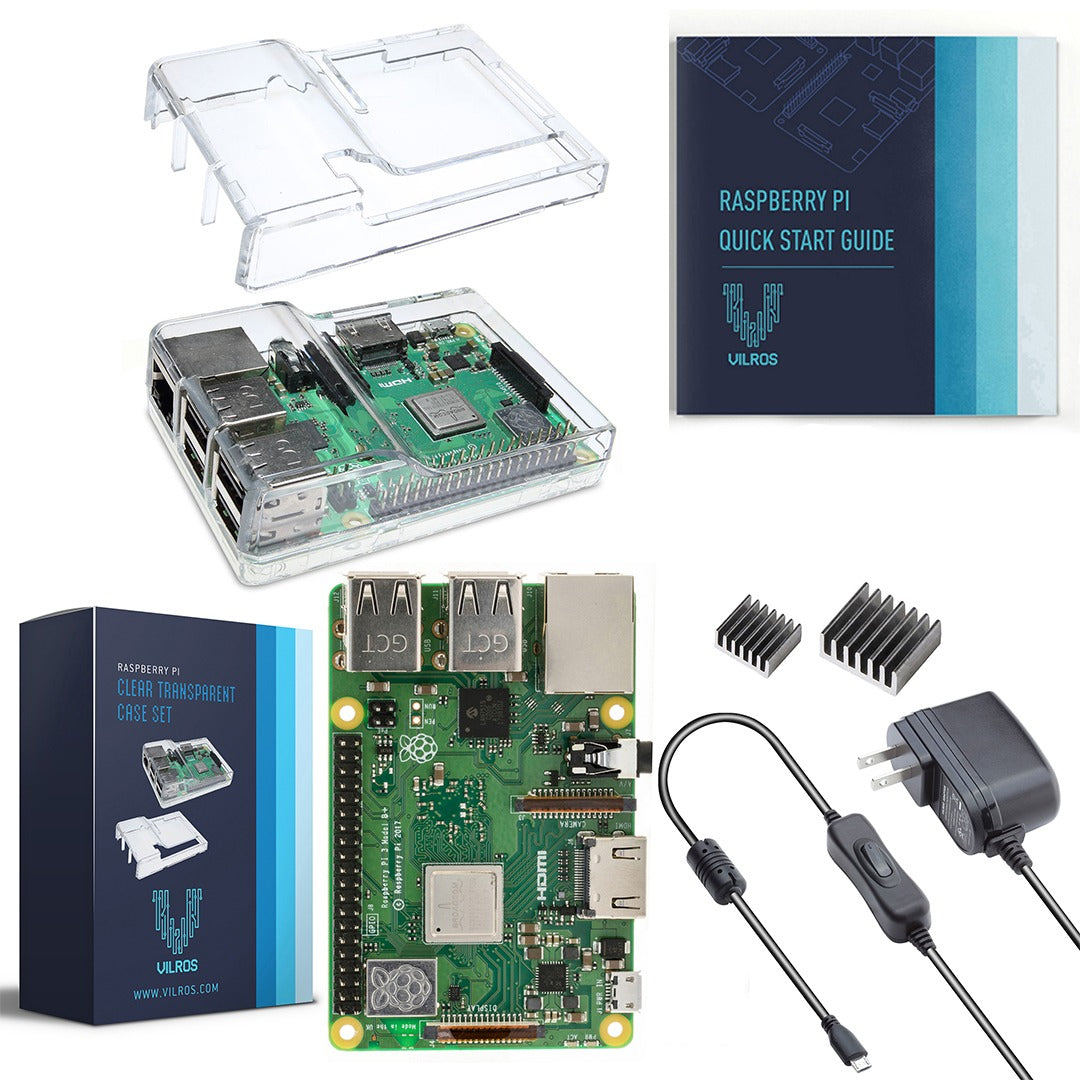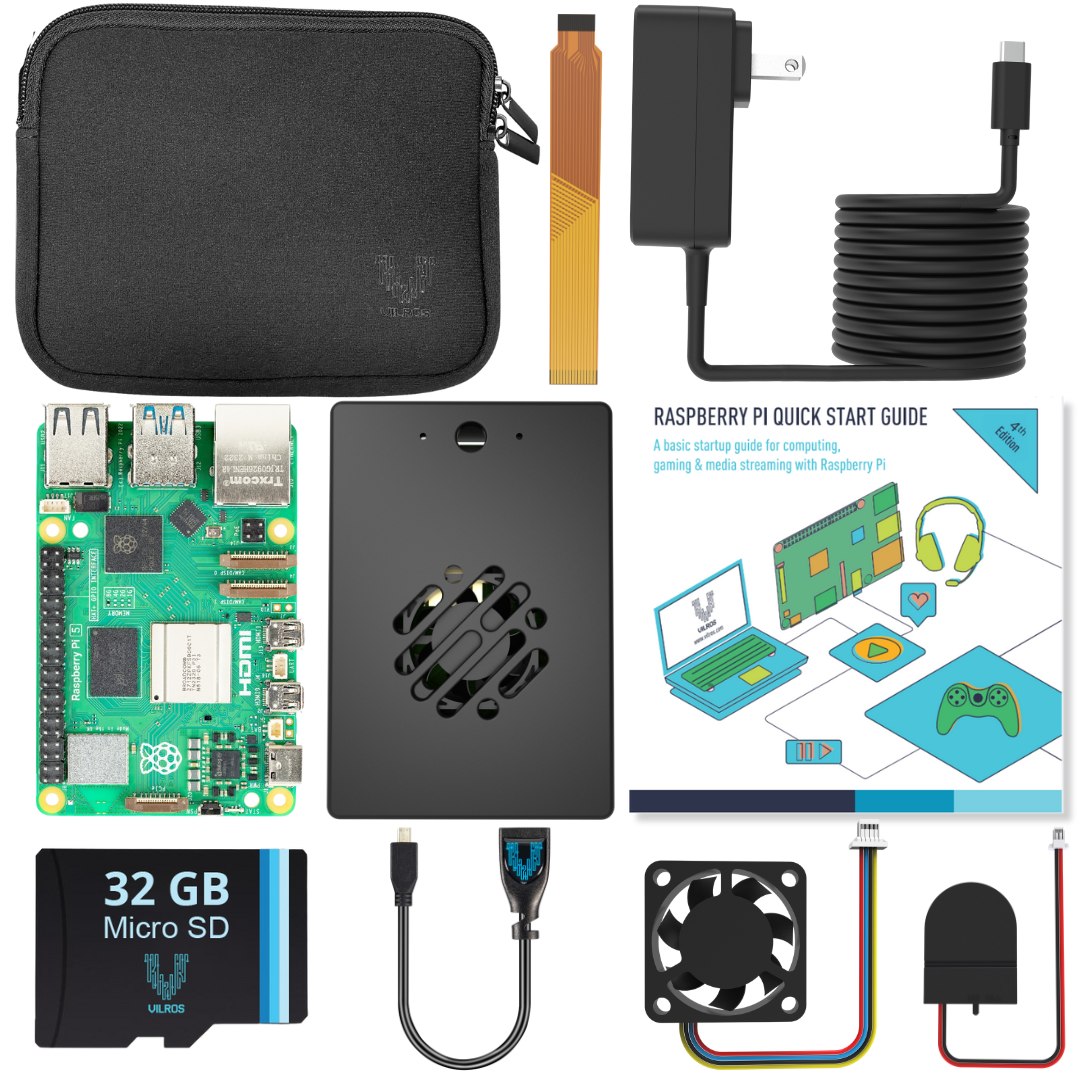
Raspberry Pi in the Classroom
Raspberry Pi in the Classroom
Learning to code will teach your students to problem solve and be creative in a way, like no other
It is not only a vital skill for today’s digital world – it will also ignite your students’ imaginations, help them better understand the technology they love to use and introduce a vast range of skills to aid their learning in other disciplines and keep your students competitive in the future job market. Coding is also a lot of fun for you, the teacher, and your students.
If you want to introduce coding to your students in an accessible, fun and educational manner – “micro computing” is a great option.
The Benefits of Bringing Micro Computing to your Curriculum
Microcomputers are scaled-down computers. They contain a microprocessor, memory and a series of ports so you can hook up a keyboard, monitor, mouse and other connections. Microcomputers are slower than their modern laptop or desktop counterparts, but can still provide all the functionality you’d expect from a computer, at a low cost and low-power consumption level. Usually no bigger than the size of a credit card, these tiny computers will also bring massive benefits to your students:
Educational Advantages
Coding is an empowering experience for students – they can get a computer to do what they want with a few lines of code. This foundation will set your students up for a lifetime of the successful use and management of technology – as well as helping them understand the basic inner workings of computers. In today’s technology-obsessed world, it’s an important transferable skill to have – and one that will help your students stand out from the crowd when they enter the job market.
Micro Computers are Problem Solving Powerhouses!
Using a microcomputer for real-world projects teaches your students to approach a problem from an innovative and different angle. For example, microcomputers can be used as cameras, media centers or retro gaming machines. What’s more, learning to code will help you students understand how to follow instructions and think in a logical way to break down problems into manageable chunks.
Powering Creativity
Microcomputers are highly versatile pieces of technology. They can be used in a range of ways and, therefore, will help your students to solve problems in new and interesting ways. There’s also a crossover between coding and other creative disciplines. For example, when you write a piece of code you have to progress your thoughts logically to resolve a problem and reach a conclusion. It’s a very similar process to basic storytelling skills – helping your students to improve in their written and oral communications.
Don’t Forget – It’s fun!
Microcomputers make learning to code fun. They will help you to engage your students in a very different way – using their own ideas to build their own projects. You don’t need to endlessly stare at a computer monitor or a textbook – your students can learn through games, apps and doing a little DIY electronics.
And Finally the cost analysis of bringing a micro computer into your classroom … Microcomputers also cost a fraction of the price of PCs or laptops – most kits come in at less than $100.
Introducing the Raspberry Pi
The Raspberry Pi is a popular microcomputer and, from an educational perspective, it is a great choice for your students. Here’s why:
Education is at the Pi’s heart
The Raspberry Pi was originally introduced as a low-cost device to improve programming skills and computer hardware understanding at the pre-university level. Its creators recognized that, although today’s students are prevalent tech users, many do not understand the technology running their iPads, smart phones and gaming consoles. This strong foundation in teaching makes the Raspberry Pi one of the most user-friendly and accessible microcomputers on the market.
Robust and cheap
There are no moving parts on a Raspberry Pi and these microcomputers can also be housed in a protective casing. You can also buy a Raspberry Pi for just $33 . So, even though it’s difficult to break, you don’t need to worry about expensive replacements.
It’s open source and expandable
There are multiple uses for the Raspberry Pi, but you don’t need to spend an excess amount of time to learn how to do something really fantastic with your Pi. The Raspberry Pi is an open hardware initiative – which means that many of the projects for the Pi are well-documented so you can learn from others’ work and modify your Pi to meet your own goals.
There are also plenty of gadgets and gizmos you can attach to your Pi to transform it into anything from a camera to a retro gaming console . Like the Pi, these additional components aren’t too expensive and most projects don’t require additional hardware.
Great resources for you and your students
Teaching a bunch of tech-savvy kids how to code may sound like a daunting task – but the Raspberry Pi Foundation has a lot of great resources to help you teach and your students learn – and they’re free. From forums to project suggestions and other educational materials, there’s also a huge community of enthusiasts so you’re bound to find someone to help you with your Raspberry Pi.
How have other educational institutions used the Raspberry Pi?
A number of educational institutions have used the Raspberry Pi to teach, learn, and entertain. Here are a few of our favorites:
- St Joseph’s Catholic Primary School gives an excellent round-up of setting up and using their Raspberry Pis for a range of projects and a coding club. Using the two programming languages (Scratch and Python), which can be used free of charge with the Pis, the school has helped children aged 9-10 understand the basics of code.
- The OCR (Oxford, Cambridge and RSA) UK awarding body gives detailed descriptions of using the Raspberry Pi to “liven up your lessons”. This includes projects to create a singing jellybaby, a flood alarm and a range of classroom challenges.
- A good example from the Richard Pate School in the UK is a Door Answering System to help elderly or disabled people to answer the door.
- Another student demonstrates her Raspberry Pi project, which detects motion, light and temperature to automatically set off a buzzer, LED and fan lighting in a purpose-built Lego smart home.
- Tom Dubick, who teaches engineering at Charlotte Latin School in North Carolina, is the first US teacher to regularly use Raspberry Pis in his lessons. He taught a class of middle-school girls to build basic electronic systems and code using Scratch and Python. Speaking to the Raspberry Pi Foundation, Tom said: “Our students are doing math and science when they learn how a computer works or a microcontroller can be programmed. They are doing engineering when they develop a unique use of the Raspberry Pi to solve a problem. It will be a great opportunity for our students to experience the creativity and beauty found in engineering and design. It’s like a sandbox and you get to play and try new ideas. I am excited to see what you will do with the Raspberry Pi that hasn’t even been thought of yet.”
How can you use the Raspberry Pi in your curriculum?
First, you’ll need to buy a Raspberry Pi so you can start to teach yourself the basics. If you’re new to the Raspberry Pi then our Complete Starter Kit will give you everything you need to get started. Or you can choose from our full range of Raspberry Pi kits if you want to expand into specific areas.
Second, sign up to the Raspberry Pi’s Picademy, which is a free teacher training initiative. You can sign up to a two-day training course or train online to get the experience and tools you need to teach computing with confidence. The course will take you through a series of workshops introducing the Raspberry Pi and some great projects you can introduce your students to. You’ll also get the opportunity to develop your own projects for your students. You’ll leave as a Raspberry Pi Certified Educator, ready to share your new-found enthusiasm with your students and other educators. The program is quite popular as you will read here.
Last, check out the education section of the Raspberry Pi site. There are a ton of additional resources here to help you understand the world of Raspberry Pi and introduce it to your students. Here are some great places to look:
- The Teachers’ Guide to the Raspberry Pi will take you through the basics of introducing the Pi to your classroom.
- If your students like to learn in a range of different ways, the Digital Making Curriculum is another great resource. It’s a guide to help you understand the resources available for your curriculum and will help you to cover the broad spectrum of students’ needs.
The versatility of the Raspberry Pi and the support it offers to educators make it a solid choice for your curriculum. There is no right way to introduce the Raspberry Pi to your educational institution. Like the Pi, get creative and start coding.
It will completely change the way your students view the world.





